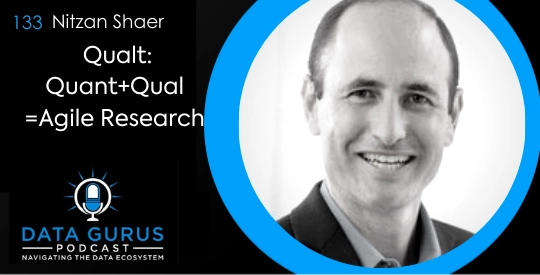Podcast: Play in new window | Download
In this exciting episode, Sima is excited to have Nitzan Shaer, the CEO, and Co-Founder of Wevo, joining her.
Nitzan’s background
Wevo is the fourth company that Nitzan has either started or joined early on. He loves the thrill of joining a team of like-minded people in the early days of a new venture. Skype was among the companies that he joined early on, which were all in the space of trying to help consumers solve a big problem.
Wevo
The context for Wevo got formulated while Nitzan was with Skype. He started thinking about other industries where the cost-per-minute was very expensive, and reducing the costs would make them more efficient.
A nightmare
At Skype, they wanted to understand more about their customers, but it was too expensive. It was also a nightmare to collect user research to know which products to build and which features to improve.
The background for creating Wevo
Wanting to listen to their customers more, and knowing they were in an industry where costs could get reduced dramatically, were factors behind the creation of Wevo.
Reducing the time it takes
At Wevo, they take a process that usually takes about 200 hours to run, like a feasibility study or focus group, and reduce it to a half hour.
What Wevo does
Wevo is an AI tool to listen to customers, hear their needs and challenges with their user or entire customer experience, and provide validated insights on the core problems, the core hurdles, and the things that are working very well. They answer why people are experiencing a challenge in their user experience. That enables a team to generate a better user experience. They also enable their users to validate their ideas.
The user
With Wevo, the user needs to define its target audience and identify the experience he is trying to optimize. That usually takes less than ten minutes. At the end of the process, the user gets a report with all the needed information.
Updates
The expectations of users are continuously evolving. Wevo believes in a continuous flow of updates around what people are feeling and how they are responding.
Partnership
Wevo has a partnership with multiple participant providers to help its customers find their exact target audience.
Three lenses
It is hard to evaluate the user experience, so through a process that began about four years ago, they have developed three primary lenses through which they look at each user experience:
What happens on the pages of a user experience
Areas that are roadblocks or hurdles to conversion
Areas that are helping the engagement
Diagnostic drivers
The diagnostic driver, which examines areas to understand them and to benchmark progress. Areas examined include clarity, appeal, credibility, relevance, and overall experience.
Expectations versus reality
The technology asks people about their hopes and concerns when considering purchasing a product or service. Then, once they have experienced it, they ask them to answer whether their expectation got met or not. Human-augmented AI is vital in that process.
The Wevo Sentiment Map
The Wevo Sentiment Map shows the areas of the biggest problems in the experience and the areas that are the biggest helpers.
Quant and qual
Everything they do is quant and qual, so they also explain why there is a problem. (They call that qualt.) Nitzan points out that many systems today lack the partnership between quantitative and qualitative.
Those who gravitate to the Wevo solution
They are currently seeing much adoption with UX researchers, designers, marketers, and product managers. Engineering teams have also started using it.
The disruptive power of Wevo
Wevo is compressing the time it takes for people to get validated feedback. That means that organizations can move quickly because their learning starts to accelerate. Their ability to take risks also accelerates because they can test everything.
Links:
Email me your thoughts!
Sima@Infinity-2.com
LinkedIn
Twitter
Wevo




